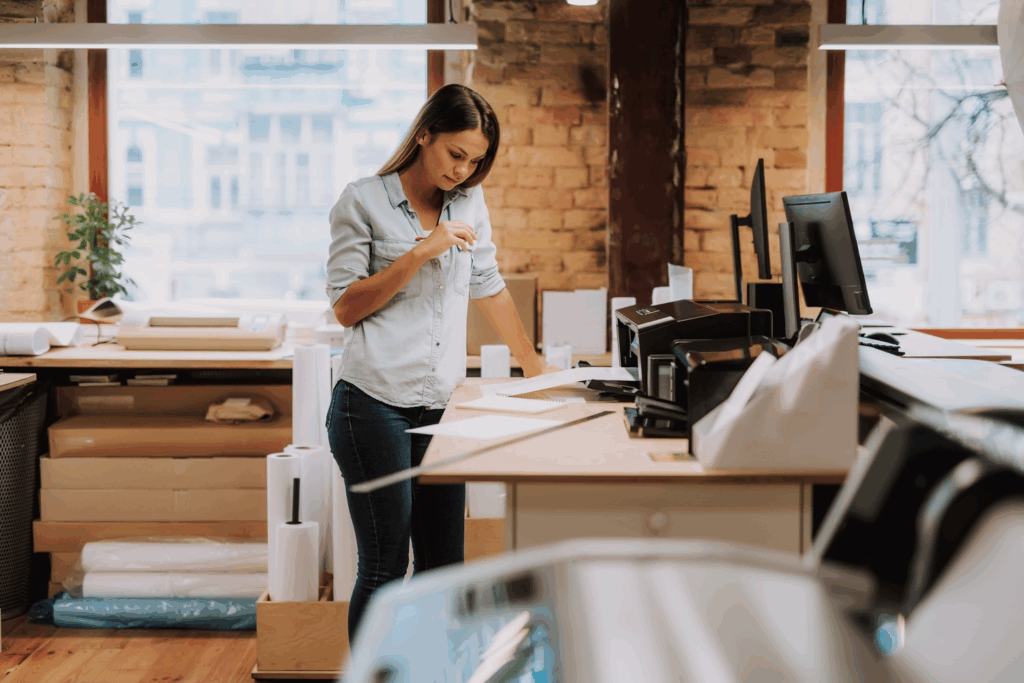
Modern offices rely on hardware that keeps work flowing without slowdowns. People move through tasks faster when the setup supports focus, comfort, and clear communication. A few core pieces of equipment make a big difference in day-to-day routines, from shared meeting areas to individual desks. The items below often end up shaping productivity because teams depend on them throughout the week.
Reliable Seating and Desk Essentials
Comfort affects output more than many expect. Long days at a desk feel rough when chairs lack proper structure or when workers shift around to ease back or hip pressure. Offices that invest in sturdy office chairs usually see fewer complaints about discomfort during long stretches of focused work. Some employees add an ergonomic seat cushion to adjust height or soften the seat if the design feels too rigid. These accessories help create a setup that suits different body types.
A stable desk setup also matters. Many offices mix adjustable desks with fixed-height ones. Some people prefer to shift between sitting and standing throughout the day. Others lean toward consistent setups. Both can work as long as the surface gives enough space for a laptop, notebook, and a second monitor. Workers at home often combine compact desks with pieces from home-office furniture collections to match limited space, while shared offices stick to larger surfaces that fit more equipment.
Print, Scan, and Document Tools
Paper handling still plays a role in many workplaces. Teams often print contracts, scan signed pages, or archive documents for reference. Offices that rely on separate devices for each task usually run into delays when one machine is in use. A combined office printer scanner helps reduce those delays because people do not need to move between machines. It also simplifies maintenance because tech teams handle fewer parts.
Some workplaces keep a compact instant photo printer nearby for quick visual references. Designers sometimes use it to compare color variations or prepare physical samples for meetings. Project managers might use it to attach a visual cue to a report to keep discussions on track.
Meeting Room Gear for Clear Communication
Offices hold frequent discussions, so meeting spaces need hardware that supports smooth conversations. Rooms used for virtual meetings depend on steady microphones, noise control, and cameras that avoid grainy video. The right video collaboration device helps teams stay aligned because participants can hear and see each other without distractions.
Spaces differ from one office to another. Larger teams use medium to large meeting spaces for presentations or training sessions. Those rooms benefit from stronger speakers, larger displays, and mounted cameras that pick up each person at the table. Rooms on the smaller side work differently. Compact spots that function as huddle rooms need simpler gear. A single camera and a table microphone usually handle everything. Some offices set aside smaller rooms where two or three people can jump into quick calls without interrupting coworkers.
Lighting and Acoustic Tools
Lighting shapes productivity more than people notice. Workers prefer consistent brightness that avoids shadows or glare on screens. Offices that adopt a thoughtful lighting system often create softer environments that reduce eye strain. Many switch to LED lighting because it offers steady performance across long hours. The right arrangement keeps areas bright enough for reading without creating spots that feel harsh.

Noise control also matters. Open layouts often carry conversations farther than intended. Acoustic wall panels help limit echo and reduce distraction. Some offices mix different shapes and textures to absorb sound in active areas like meeting zones or collaboration corners.
Storage, Organization, and Room Layout Tools
Workflows slow down when supplies scatter across desks or when teams cannot locate equipment in shared rooms. Offices often use modular storage units so people can access files, tools, and presentation gear quickly. Many turn to custom cabinet makers when they need storage that fits a tight corner or an awkward space. Teams that handle prototypes or samples appreciate dedicated drawers that keep items sorted.
Visual planning tools also help shape productive layouts. Modern design tools let office managers plan desk rows, meeting zones, and collaboration corners before moving furniture. Adjustments happen faster when teams can preview how a layout might affect movement across the floor.
Some businesses keep a close eye on pricing when ordering large batches of office items. Procurement teams sometimes ask vendors about special offers when upgrading equipment, particularly during relocations or expansions. Good timing can help stretch budgets further, especially when buying storage units, lighting fixtures, or meeting room gear.
Hardware That Supports Hybrid Teams
Offices now blend remote and onsite staff. Teams need tools that help bridge that gap so work stays aligned across locations. Equipment that supports hybrid collaboration helps remote workers feel included in team sessions. This might involve cameras that capture the whole room, microphones that pick up voices evenly, or displays that show remote participants clearly.
Small groups often handle quick brainstorming sessions in huddle spaces with simple tools like whiteboards or compact screens. Teams working on longer planning cycles tend to use larger rooms where they can pin up visual aids, test prototypes, or review files together. Some groups even bring in items from the furniture industry when building spaces for collaborative projects. Movable tables, modular seating, and portable boards help teams shift layouts depending on the task.
Conclusion
Modern workplaces depend on hardware that supports focus, communication, and comfort. Offices that combine reliable seating, practical storage, clear audio and video setups, and thoughtful lighting tend to run smoothly each day. These items help teams move through work without unnecessary friction, whether they gather in meeting rooms, join calls from remote spots, or focus on tasks at their desks. A solid mix of these tools lays the foundation for productive routines across different work styles.







